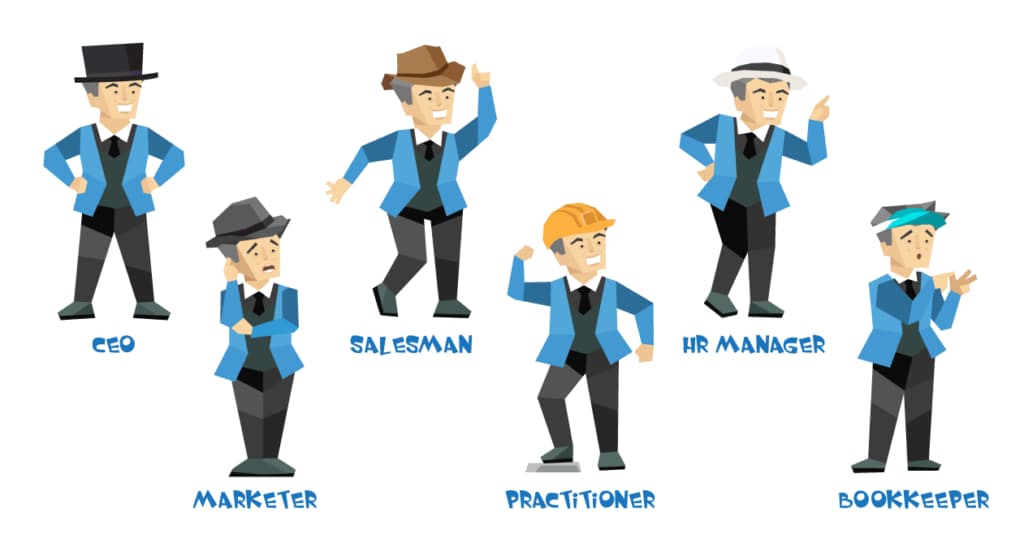Employees are one of your businesses’ greatest assets, so it is important to maximize their potential and increase your company’s chance of success with strategic planning.
“Loyal customers, visionary leaders and quality goods and services all influence success, but usually a company’s best asset is its employees,” says the Indeed.com Editorial Team.
Anne M. Mulcahy, former chairperson and CEO of Xerox Corporation, agrees with Indeed’s assessment.
“Employees are a company’s greatest asset – they’re your competitive advantage,” said Mulcahy. “You want to attract and retain the best; provide them with encouragement, stimulus, and make them feel that they are an integral part of the company’s mission.”
Attracting and retaining top talent is more important than ever in today’s tight labor market. Not only are employee or performance reviews an integral part of evaluating your workforce, but a talent review can help position your company for future growth.
What is a Talent Review vs. a Performance Review?
Unlike an annual employee review, where a manager sits down with an employee and reviews their performance, a talent review is conducted by company leaders that not only review employees’ performances, but also plan on how they fit into future roles.
with an employee and reviews their performance, a talent review is conducted by company leaders that not only review employees’ performances, but also plan on how they fit into future roles.
While performance reviews are often looking backwards, talent reviews look forward towards maximizing the company’s employees and their potential.
Talent reviews can be great for helping your company identify, and help retain, top talent – a great talent review will let your company know which employees are so essential that their absence would substantially hurt day-to-day operations.
The Nuts and Bolts of a Talent Review
Oracle says that “the talent review process is centered around one or more talent review meetings intended to evaluate organizational trends, assess strengths, and address areas of risk for an entire organization.”
During the talent review process, according to Oracle, you can:
- View talent across an entire organization or filter to view population segments.
- Calibrate performance and potential ratings.
- Evaluate risk and impact of loss.
- Evaluate compensation plans.
- Create goals for workers.
- Identify, assign, and track actions throughout the review process.
- Store the results for future comparisons.
Ideally a talent review can help your organization identify future leaders of your company and their path forward.
“There’s no company process more important than accurately selecting and investing in your future leaders,” says InsideHR.
Best Practices for a Talent Review
Talent reviews can be conducted whenever your company has key vacancies, or your organization is undergoing business changes.
Like performance reviews, a regular schedule of talent review meetings, either once a year or multiple times a year, is best for keeping your talent recruitment and retention current.
The successful talent review would include lead time with managers and other decision makers involved needing sufficient time to prepare.
Standardized assessment, including talent review questions, should be decided on in advance. Managers should evaluate employees on things such as:
- Performance
- Leadership qualifications
- Experience
- Skill set
- Growth potential
- Ability to learn
- Development needs
This prep process does not need to be cumbersome but can be streamlined.
“You should be able to conduct a talent review with two sheets of paper – a 9-box grid (or your favorite tool) and a succession chart,” says InsideHR.
Talent Reviews and the 9-Box Grid
One of the best practices for talent reviews is to utilize a 9-box grid for employee assessment.
The 9-box grid includes:
- X-axis that measures an employee’s performance from below expectations or sub-par performance to meet expectations or effective performance to outstanding or above-average performance.
- Y-axis that measures an employee’s potential from low potential to medium potential to high potential.
When your 9-box grid is complete, the three boxes in the upper right corner are your top talent with “Box 1” being employees with outstanding performance and high potential. “Box 2” would be employees with effective performance and high potential while “Box 3” would be employees with outstanding performance and medium potential.
All three of these boxes are employees to watch for risk of burnout or leaving the company.
The three boxes diagonally across the grid would be Box 4 (Outstanding performance, low potential); Box 5 (Effective performance, medium potential); and Box 6 (Subpar performance, high potential). The goal is to move these employees towards the top three boxes.
The three boxes with employees at the lower end of the spectrum are: Box 7 (Effective performance, low potential); Box 8 (Subpar performance, medium potential); and Box 9 (Subpar performance, low potential).
Coaching and mentoring are needed ASAP for these employees.
How to Read the 9-Box Grid Talent Review Assessments
There are many ways to read the 9-box grid talent review assessments.
In the example above, the top line of the grid (high potential) includes boxes 5, 2 and 1.
The second line (medium potential) includes boxes 8, 6 and 3, and the last line (low potential) includes boxes 9, 7, and 4.
Some 9-box grids assign such slogans and explanations to each box as:
- Box 1: Consistent Superstar (Limitations unknown; a real keeper)
- Box 2: One to Watch! (Exhibits great potential)
- Box 3: Exceeds All Expectations (top performer)
- Box 4: Capped Out? (High performer but not room for growth)
- Box 5: Lack of Skill or Lack of Will? (Improve in their current role or reassign)
- Box 6: Bidding Time? (Performs only to standards)
- Box 7: Can Progress be Made? (Performance OK but lacks potential)
- Box 8: Can Improvements Be Made Quickly? (Unable to meet current performance standards)
- Box 9: Time to Act? (Poor company fit that may need replacing)
Dan McCarthy, Director Executive Development Programs, the University of New Hampshire, gives some specifics for each box in the grid in a helpful pdf.
The bottom line is that where employees fall in the 9-box grid will necessitate what they need most from the company from those in Box 1 that should get high-profile assignments that challenge them, to those in Box 9 that need explicit ways in which they need to improve or else risk losing their employment.
Talent Review Steps
Once your managers have completed their 9-box grids and an agenda has been set, your talent review meeting can take place.
During this confidential meeting, the group should identify employees ready to fill roles and those, with some mentoring, that will be ready for roles in the future.
It can be helpful to identify employees that will hold key roles in the company in different time frames from six months to two years to five years in the future. This can formulate a succession plan for your company’s key roles.
During this talent review meeting you can identify key talent gaps that need addressing.
A summary of results should be generated from the meeting with action items for the group such as training and mentoring for certain employees.
At Employer Flexible we know that you have a multitude of issues to address daily while running your company so it can help to have a PEO organizing your company’s talent review.
Contact us today to find out how we can help your company develop a talent review that is tailored to your unique needs.






